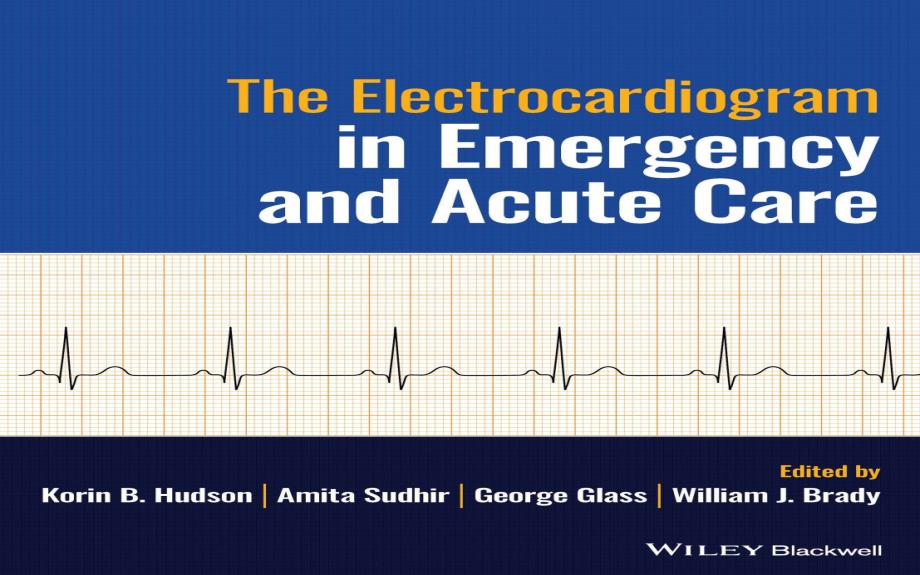The Electrocardiogram in Emergency and Acute CareClear, practical guidance in mastering ECG interpretation in the critically ill patient
The Electrocardiogram in Emergency and Acute Care contains
clear, practical guidance on mastering both single-lead and 12 lead
ECGs, covering the full range of complexities and including a section on
differential diagnosis of more common ECGs, with over 200 tracings from
which to learn and self-test.
The editors place an
emphasis on readability and accessibility, with clearly written chapters
and excellent illustrations that serve as a primary source of
information for students, trainees, and practicing emergency physicians
in all areas.
In The Electrocardiogram in Emergency and Acute Care, readers can expect to find detailed information on topics such as:
- Clinical
applications, impact, and interpretation of the electrocardiogram, plus
variants of the normal, lead misplacement, and electrocardiographic
artifact encountered in clinical practice
- Cardiac
rhythms and cardiac dysrhythmias, covering cardiac rhythms with normal
rates, narrow QRS complex tachycardia, wide QRS complex tachycardia, and
bradycardia
- Anatomic
and physiologic considerations of ischemic heart disease, historical
development of the prehospital electrocardiogram, and
electrocardiographic findings in acute coronary syndrome
- Special
populations, high-risk presentation scenarios, and advanced
electrocardiographic techniques, covering electrocardiograms in
pediatric and poisoned patients
The Electrocardiogram in Emergency and Acute Care is
ideally suited to medical students, residents, and physicians in
training, but is also a useful reference for established physicians as a
review and reference text, along with all other health professionals
working in this field.

